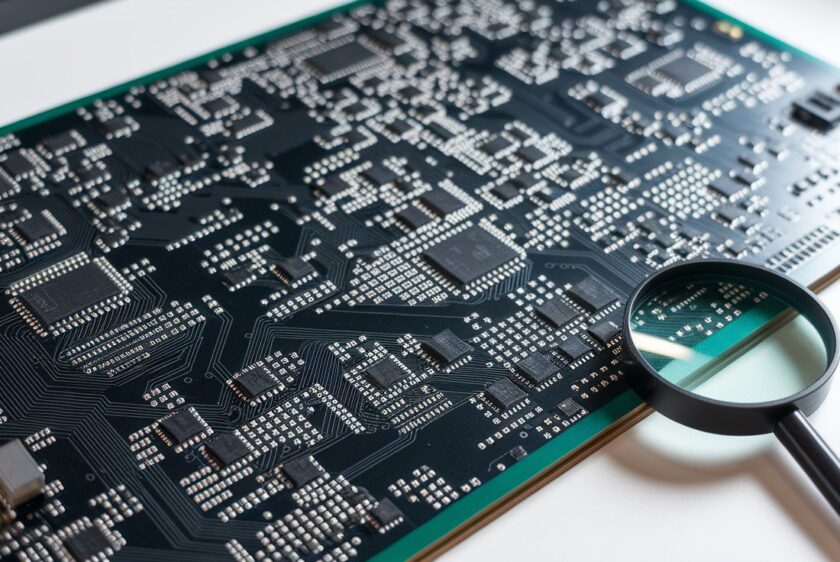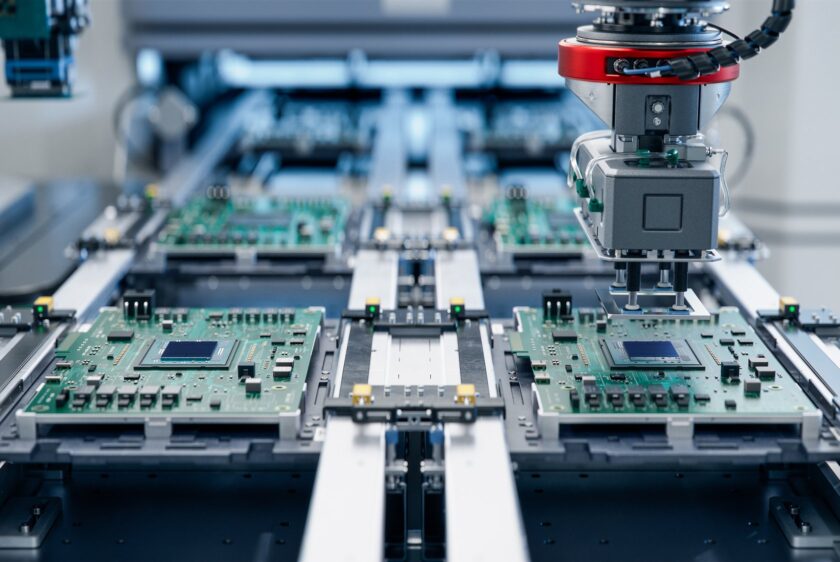
For engineers building complex, high-stakes electronics, the first prototype isn’t just a milestone—it’s a multiplier. Done right, it accelerates development, sharpens circuit design, and lays the foundation for scaling. Done wrong, it introduces risk, friction, and rework that ripples across every future build. That’s why your prototyping partner isn’t just assembling a board. They’re shaping everything that comes next.
At EST, we’ve helped teams move from napkin sketch to product launch across MedTech, aerospace, defense, and industrial markets. And across hundreds of these journeys, five truths emerge that separate successful first builds from costly restarts.
1. Think Like an Engineer, Not Just a Manufacturer
At the prototype stage, engineers aren’t just looking for fast builds—they’re looking for feedback. Smart feedback. Contextual insight. Pattern recognition.
That means:
- Flagging DFM issues before they hit the line
- Identifying long-lead or EOL parts before the PO is placed
- Calling out board layout oversights—like a test point tucked under a heat sink
- Asking about connector alignment, mechanical clashes, thermal pathways, and firmware pinouts
This isn’t extra credit. It’s core to de-risking your design.
At EST: Every prototype is reviewed by a senior technical lead who functions as an engineering counterpart—not just a box-checking PM. Our team brings decades of hands-on experience building compliance-sensitive, audit-ready electronics. And we treat every prototype like a collaborative design review—not a blind build.
What engineers value:
- A second set of eyes on tolerances, footprints, and interconnects
- An EMS partner who can catch the “it looked fine in Altium” mistake before it becomes a $5,000 problem
- Suggestions grounded in real-world builds, not just datasheet theory
2. Speed Without Losing Control
Speed is critical. Especially when you’re pushing through fast board spins, supply chain variables, or a looming investor demo.
But speed alone doesn’t cut it. What engineers want is controlled velocity.
That looks like:
- Same-day quoting with clear material and lead time flags
- Rapid acknowledgement of design changes—without a reset on timelines
- Proactive check-ins during sourcing, kitting, assembly, and test
- Visibility into the process—not “on track” updates with no substance
Because fast isn’t just a number. It’s a feeling. Engineers want momentum they can trust.
At EST: Our prototype line is built for velocity with clarity. You’ll get flexible scheduling, real-time build tracking, and always-on access to the engineering team. We stay synced on the details—so your team can stay focused on progress.
3. Prototypes Should Be Built Like They’ll Be Audited
If your build touches a regulated industry—especially medical, aerospace, or defense—your prototype is already part of your compliance posture. Even if it’s “just a first spin.”
Why?
Because stakeholders—whether they’re regulators, auditors, investors, or OEM partners—will judge your process, not just your product.
That’s why EST prototypes are built to production-grade standards, every time.
That includes:
- IPC-A-610 Class 2 or 3 workmanship standards
- Traceable component sourcing and declarations (RoHS, REACH, ITAR, DFARS)
- Build logs, operator records, and rework tracking—even for alpha prototypes
- DHR-style documentation that mirrors a full electronics product design environment
At EST: We use the same QMS and digital systems across prototypes and production, including unit-level traceability. So when it’s time to submit to the FDA, your alpha build doesn’t become a liability—it becomes an asset.
4. Real Partners Share What They See
The goal of a prototype isn’t just to get something built. It’s to learn as much as possible—quickly, accurately, and usefully.
That means your EMS partner needs to act like part of your team. That includes:
- Capturing and documenting test failures with clarity—not ambiguity
- Sharing insights on what slowed the build (so you can fix it upstream)
- Offering ideas on layout changes, part swaps, or assembly techniques
- Creating a feedback loop between hardware, firmware, and mechanical teams
Because that’s how engineering teams grow sharper with every spin.
At EST: Every prototype includes a full post-build review. We walk you through what we saw, what changed, what broke—and what to do next. We don’t hide slowdowns. We highlight them, so you never see them again.
5. The Right First Build Makes Scaling Easy
Smart engineers are already thinking ahead—even during EVT:
- “Can this partner scale to 1,000+ units?”
- “Can they support my ISO 13485 QMS?”
- “Will we have to switch vendors when we go to production?”
EST was built to be that long-term partner—from initial concept to commercial production. Because the easiest path to scale is continuity.
That’s why we:
- Use production-grade materials, fixtures, and documentation from the start
- Maintain the same QMS and traceability systems across every prototype and production line
- Train the same team across EVT → DVT → PVT, so you’re not starting over every prototyping phase
At EST: We help you scale smart, not scramble. The same team that builds your prototype builds your roadmap to volume—without quality cliffs, finger-pointing, or compliance fire drills.
Final Thought: The First Build Is the First Bet
You’re not just building a board. You’re placing a strategic bet. On your component strategy. Your compliance path. Your ability to scale. Your credibility with funders, partners, and end customers.
That’s why prototyping isn’t a throwaway phase—it’s a moment of truth.
What the best engineers want in a prototyping partner:
- Technical fluency
- Operational visibility
- Compliance maturity
- Real collaboration
- A bridge to scale
From initial prototypes and concept prototypes, including custom PCB and PCB prototyping, to alpha prototypes and pre-production prototypes leading up to the product launch, we assist with every stage. We even utilize 3D printing and CNC machining for creating tangible prototypes. At EST, we deliver all five. Because we know the first build defines everything that comes after.
Let me know if you'd like this version styled for downloadable PDF, Sales Navigator cold email follow-up, or an SEO-rich landing page version.








